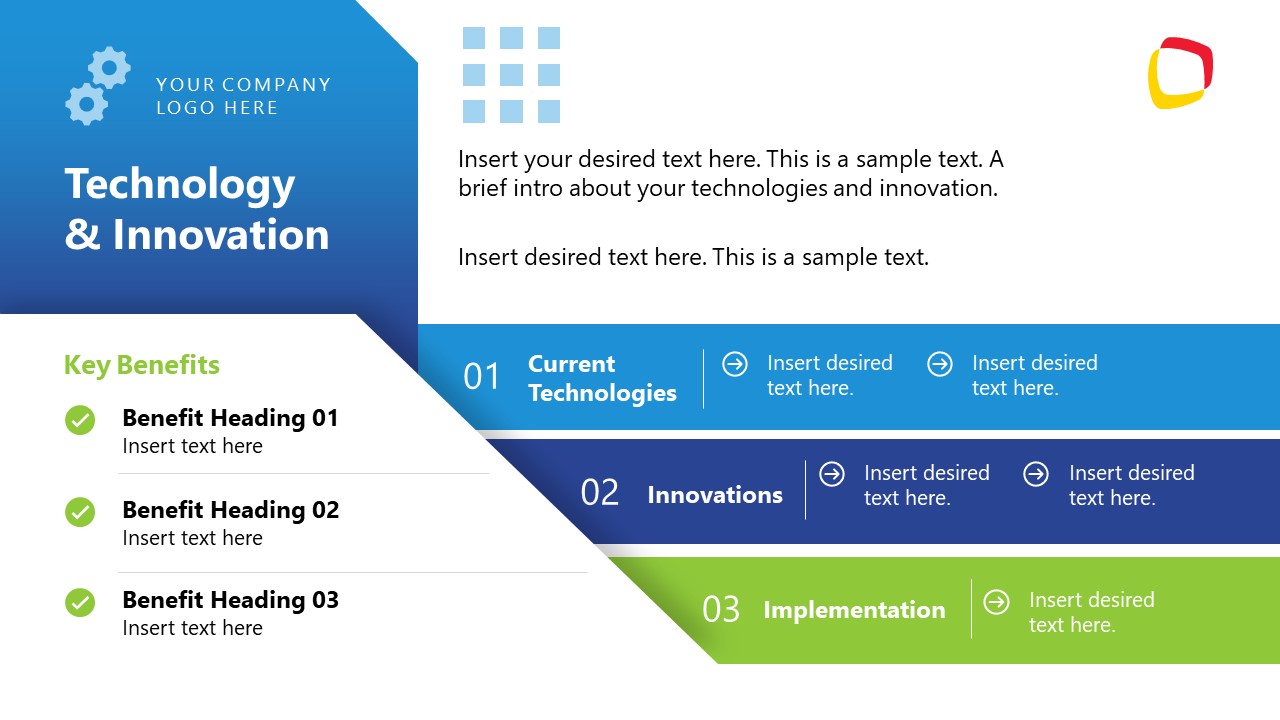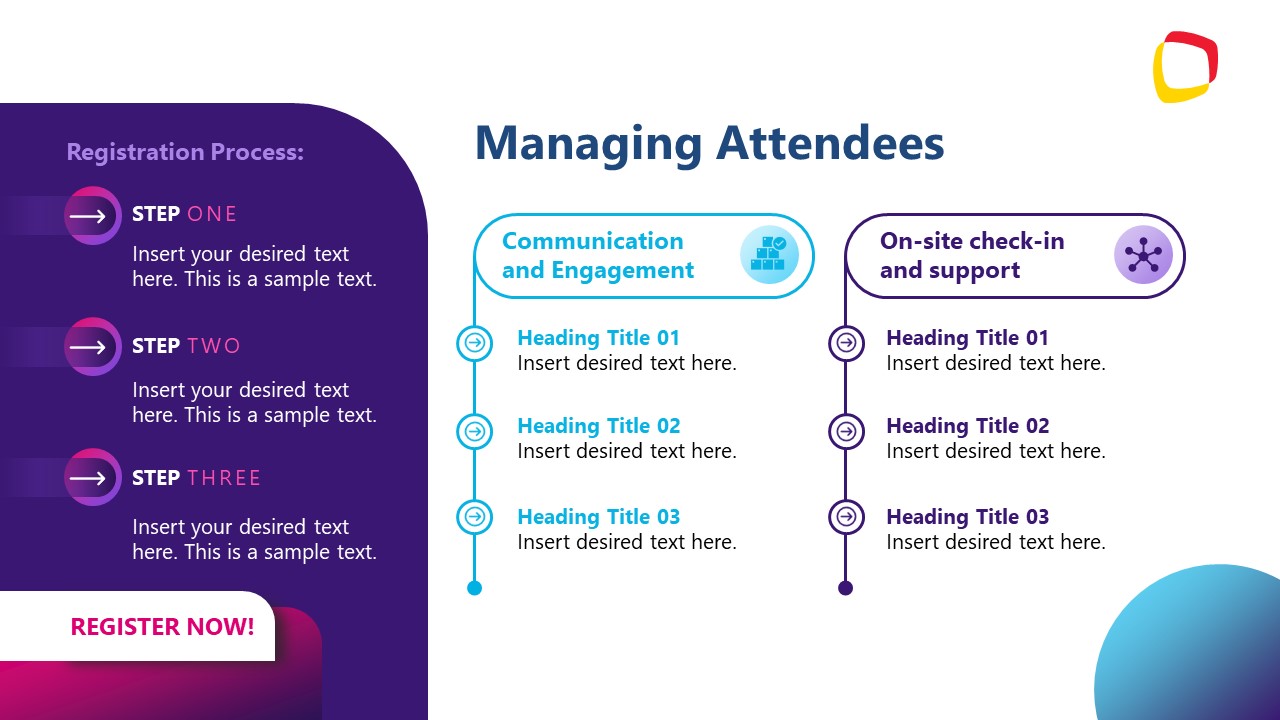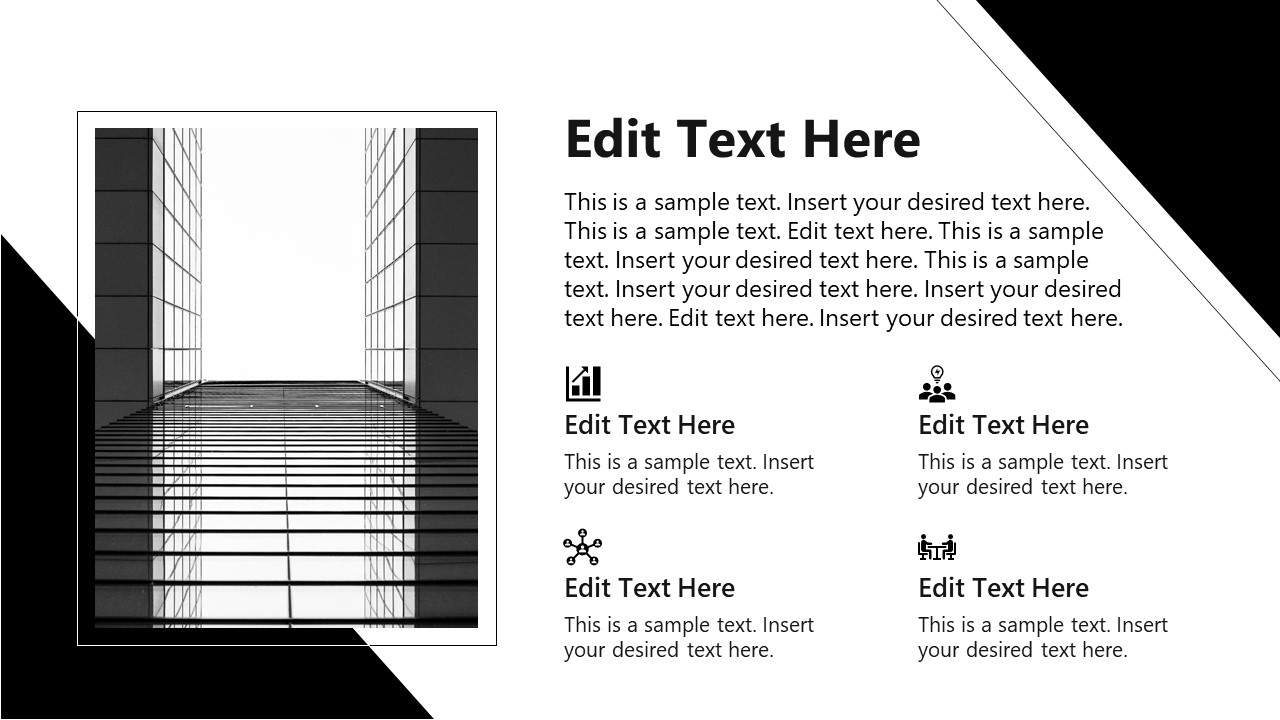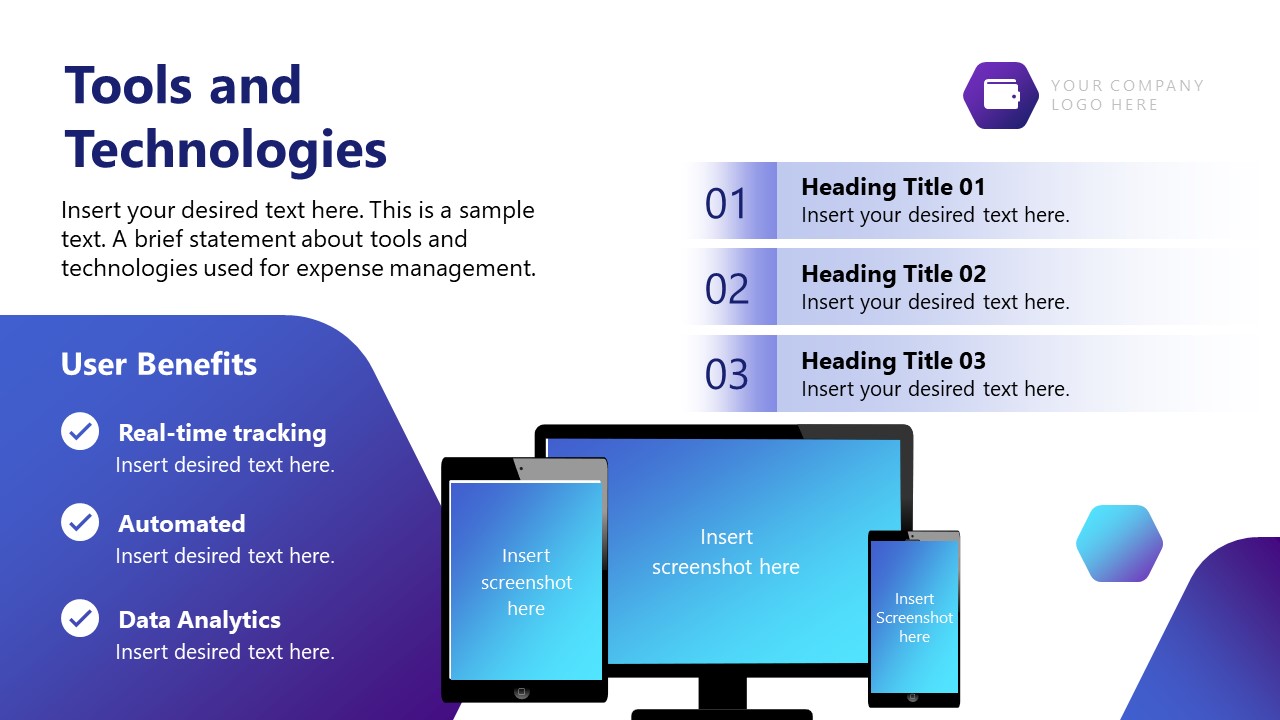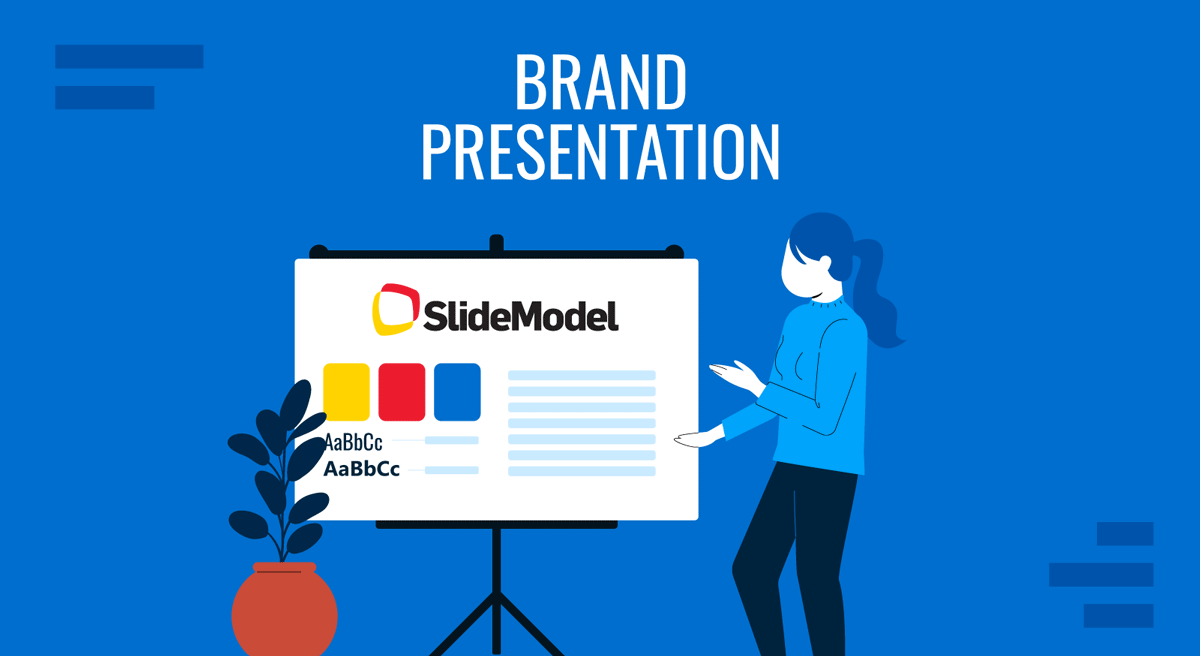
A well-crafted presentation can distinguish between securing a deal and losing a potential client. Depending on your industry, competition can be fierce when presenting ideas, strategies, and results in the most impactful format while working with a professional aesthetic. On this behalf, a branded presentation goes beyond a mere collection of slides; it visually represents a company’s identity and values.
This article will guide you in the concept of branded presentations, differentiating them from brand identity in presentations and exploring the essential elements to secure their maximum potential. Additionally, we provide a list of ready-made PowerPoint templates to make your design job easier.
Table of Contents
- What is a Branded Presentation?
- What is the Difference Between Brand Presentation and Brand Identity Presentation?
- Elements of a Brand Presentation
- How to Create a Brand Presentation Slide by Slide
- Tips for Creating an Effective Branded Presentation
- Recommended Brand Presentation PowerPoint Templates
- Final Words
What is a Branded Presentation?
A branded presentation is a customized set of PowerPoint slides that reflect a company’s unique design style and visual identity. This means that the presentation includes specific elements that are consistent with the company’s branding guidelines. These elements often encompass the company’s logo, brand colors, fonts, photography style, and other graphical elements that are part of the company’s visual identity.
Branded presentations are required tools for an efficient communication plan in any business or organization, considering both internal and external communications. By incorporating the visual elements that define the brand, these presentations help maintain a cohesive brand image, reinforcing brand awareness.
What is the Difference Between Brand Presentation and Brand Identity Presentation?
Although brand presentation and brand identity presentations are terms used interchangeably, there are considerable differences between them as they are used in their respective contexts.
Brand Presentation
A brand presentation communicates various business-related information, such as project updates, sales reports, marketing strategies, and more. It is tailored to fit the specific message and audience of the presentation while ensuring that all visual elements adhere to the company’s branding guidelines. The focus is on the presentation’s content, with the branding elements providing a consistent and professional backdrop.
Brand Identity Presentation
On the other hand, a brand identity presentation is specifically designed to introduce and explain the elements of a company’s brand identity. This type of presentation is often used during brand rollouts, rebranding efforts, or to onboard new employees and partners. It provides a comprehensive overview of the brand’s visual and verbal identity, including the logo (read our article on logo presentation for more insights), color palette, typography, imagery, tone of voice, and brand values. The goal is to educate and align all stakeholders on the brand’s look and feel, ensuring consistency across all touchpoints.
Bonus tip: Check our guide on color theory to learn how to create harmonic color palettes for your brand identity presentation.
Elements of a Brand Presentation
The following elements must be included in any brand deck.
Logo
The company’s logo should be prominently displayed on each slide. There are multiple methods to accomplish that: a footer, a watermark logo, a small logo at the top-right corner of the slide, etc.
Using a logo in a slide deck helps to immediately associate the presentation with a company or organization.
Brand Colors
When creating the slides, the use of the company’s color palette must be considered to maintain a consistent aesthetic and integrate the logo as a natural element.
Presenters can use different color schemes if the logo is monochromatic or harmonious palettes in case we count with a pre-established color selection. To create a unified look, these colors should be used for backgrounds, text, and graphical elements.
Typefaces
Have you ever heard the phrase “less is more”? Certainly, this applies to the use of fonts in your presentation slides. A branding presentation must work with the same typefaces selected for the logo or with options defined at the brand identity stage.
As a general rule, never use more than three different typefaces or more than three font weights in the same slide deck.
Imagery Style
One aspect that defines a professional brand aesthetic is to count with images or photos in the same style across slides. If you work with photos, then stick to similar editing settings. If you opt for illustrations, then continue using illustrations across the branded slides.
Another example is mixing black-and-white images with fully colored images. As a rule, you should use the same color scheme across your images.
Graphical Elements
Icons, graphs, patterns, charts, shapes, and any other graphical element. On this behalf, you can find fine examples of what to include in these categories:
Voice Tone
While primarily visual, the tone of voice in any text or spoken elements should also reflect the brand’s personality and values. Avoid unnecessary jargon and changes between active and passive voice.
How to Create a Brand Presentation Slide by Slide
Creating a branded presentation is fairly easy once you master the steps. The core structure remains the same, but the body slides can be changed depending on the requirements of your presentation.
Title Slide
This slide sets the tone for the entire presentation. In a few words, it’s your introduction card.
The company logo should be prominently displayed but in a subtle way so it doesn’t compete with the text. The presentation title must use the brand’s font and color scheme, including a subtitle with a lighter font weight version of the brand’s font. Format the date and presenter’s name so that it can be easy to edit if the slide deck has to be repurposed.

Agenda Slide
The agenda slide serves to outline the main points to be covered in the presentation, hence giving the audience a clear understanding of what to expect. You can use the brand’s accent colors to highlight each point of the talk or creative PPT icons to bring attention.
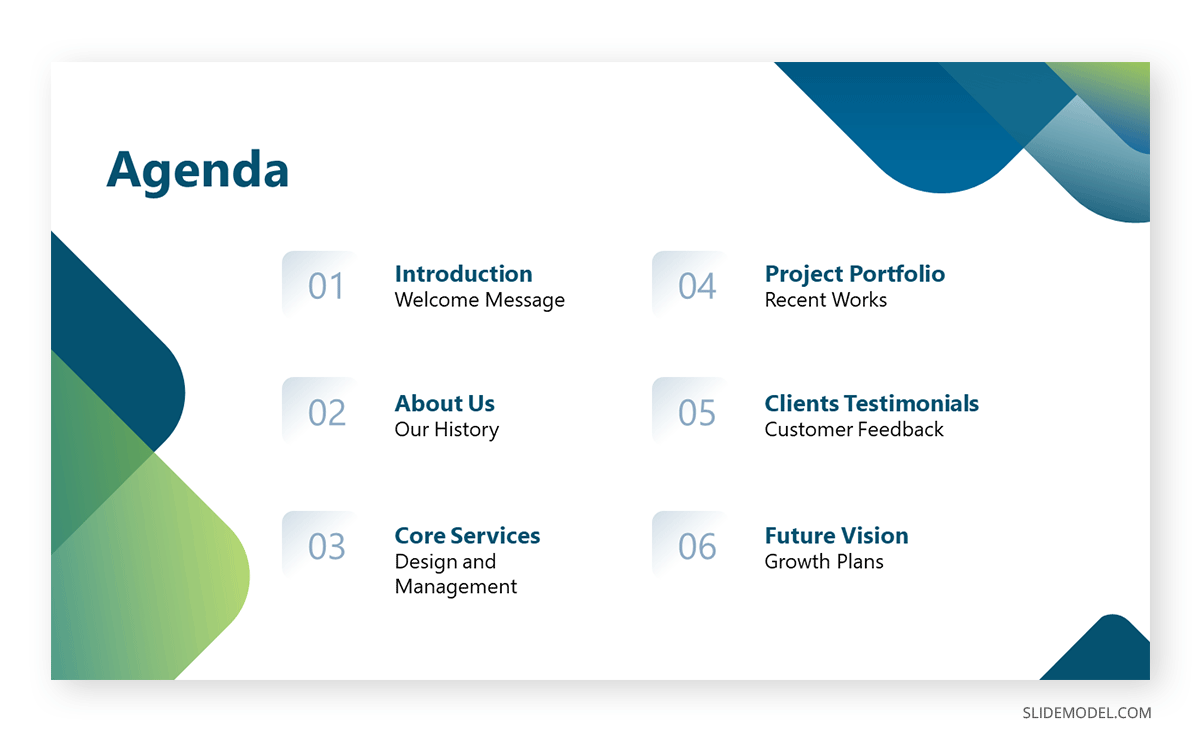
Introduction Slide
Like any other presentation, you need to introduce the purpose and context. A branded presentation would take into account the imagery style, color palette, typefaces, and logo placement.
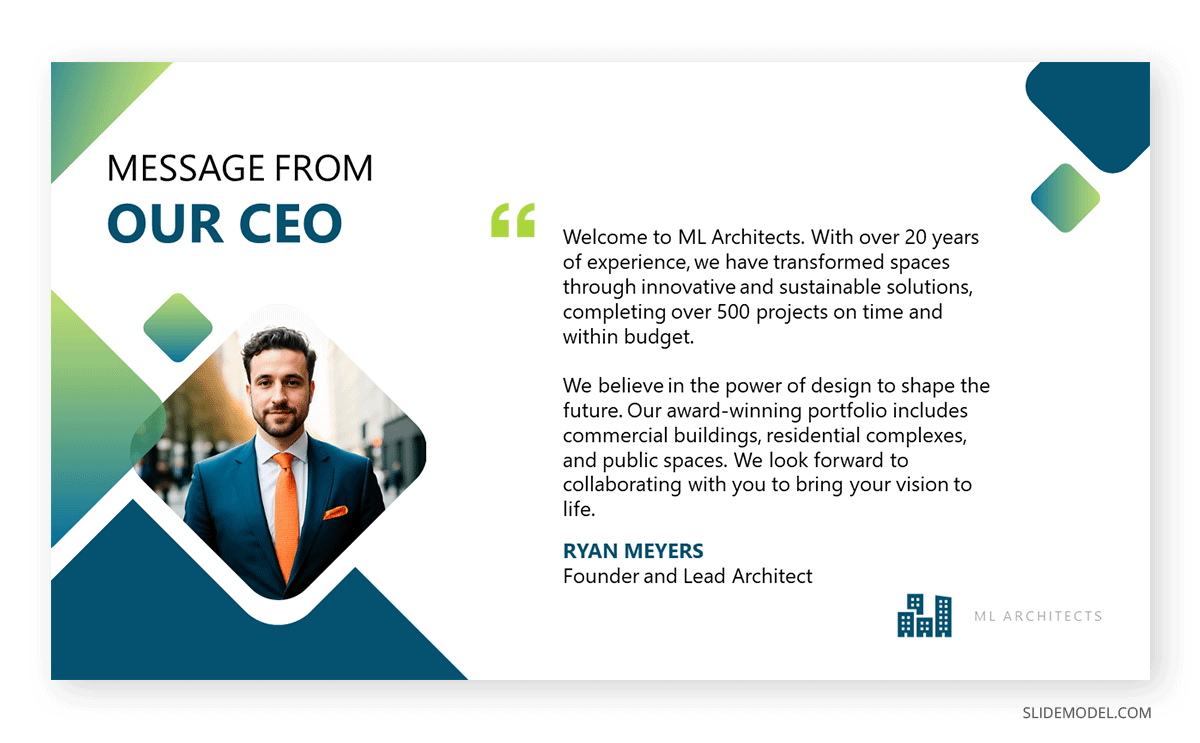
Body Slides
Depending on the kind of presentation you’re building, the structure of the slides will vary. Since consistent logo placement is a must in branded presentations, in our experience, it’s best to stick with the top-right corner or footer as a potential position for it. If you opt for the latter, be sure to place the logo at the opposite corner of the slide number indicator. Keep in mind you don’t have to add the logo to all slides, as that’s overwhelming for the viewer.
Charts and graphs have to bear the same color palette designated for the brand identity or directly contrasting colors in case we work with a monochromatic scheme. One useful concept to master is the brand essence wheel, as it can help us curate which content is relevant for our presentation, depending on the context.
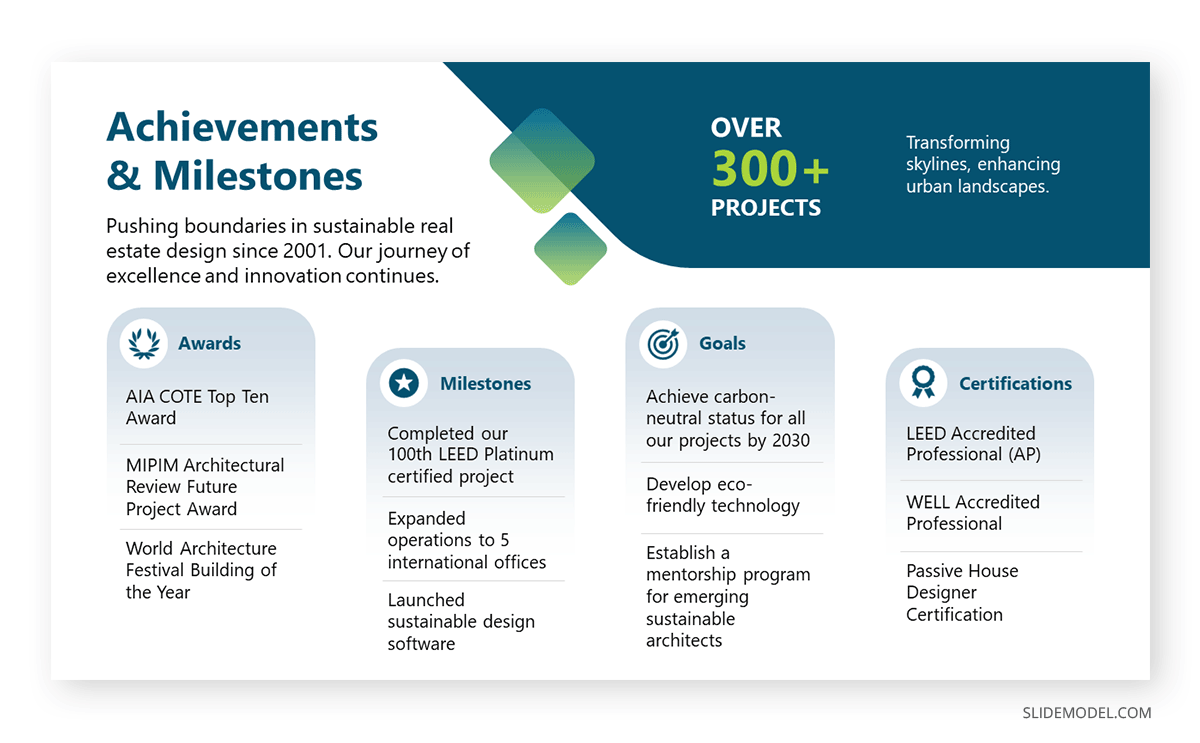
Conclusion Slide
When defining how to end a presentation, presenters summarize the core concepts disclosed in the presentation and use call-to-actions to elicit a response from the audience. The text should be kept concise and focused, using the brand’s accent colors for the call to action button or graphics.
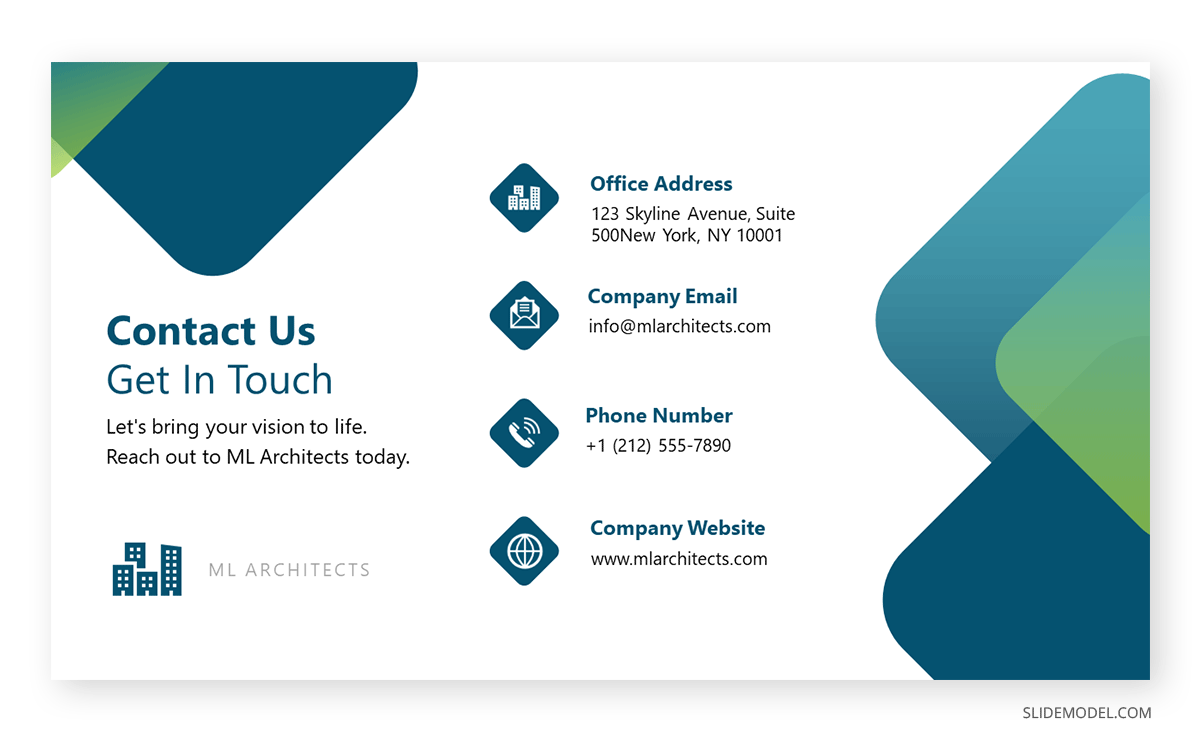
Tips for Creating an Effective Branded Presentation
Tip #1 – Start with a Template
Working with professionally-designed PowerPoint templates cuts down the branded slides creation process by over 200%. Not only do you not have to worry about color pairing or font pairing choices, but you also ensure that a consistent look is going to be used across all slides in your deck. In case you don’t find a template that bears the same colors as your branding, you can easily customize it in both PowerPoint or Google Slides.
Tip #2 – Leverage Social Proof
Incorporate testimonials, client logos, and case studies that reflect your brand’s credibility. This is of particular interest in scenarios like business pitches or sales presentations, where your reputation is the one key factor that can make or break a deal.
Tip #3 – Incorporate Motion Graphics
Not all presentations have to bear a boring, old-school 2D look. Using branded motion graphics or animations is a great method to engage your audience and explain complex concepts in a more dynamic format.
Tip #4 – Negative Space is Your Friend
Don’t overload slides with tons of content to show how much you know about a topic. A presenter who mastered the art of communication is well aware that less is more, so learn how to effectively use negative space to make the slides look clean. Focus on emphasizing key content rather than populating slides on the go.
Tip #5 – About Your Backgrounds
Use simple, branded backgrounds to focus the attention on the content, not the graphics. Gradient effects can be used as long as they remain subtle.
Tip #6 – Test for Accessibility
A point to take into account, especially for company-wide presentations, is to check for high-contrast colors, readable fonts, and alt text for images. Considering accessibility for your presentations is a must these days if you care about your attendees and the experience they get out of your content.
Tip #7 – Logo Placement
Unlike what most people think, your logo doesn’t need to be shown on every single slide. In fact, that’s a bad practice as you overcrowd the slides with content. It’s a very different scenario if we talk about academic presentations where the slides may be repurposed for educational content – thus, your branding is important in terms of intellectual property. Once again, for most cases, placing your logo every 3-4 slides is good and plenty.
Recommended Brand Presentation PowerPoint Templates
Final Words
Coming up with a branded presentation is not a complex process. Presenters can use multiple tools available online to come up with professional-quality results, like presentation templates, font pairing tools, branding guideline documents, and the list goes on. It’s important to highlight the brand in the subtle details, like color selection, rather than overloading slides with badly sized logos or repeated branding elements (i.e., website address). Keep it simple and iterate to achieve your desired result.
